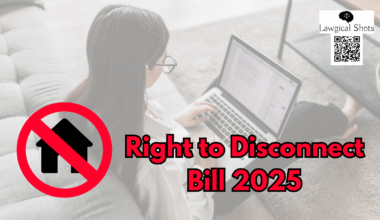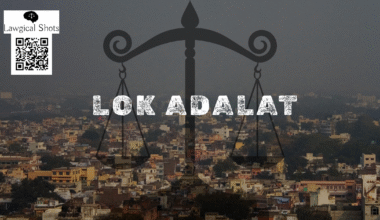“Legal aid is an arrangement to give the poor and uneducated people easy access to the legal system, ensuring that their lack of knowledge and financial hardship does not prevent them from seeking justice.”
~Justice PN Bhagwati
Introduction to Free Legal Aid
Radha was a widow from a small village in Uttar Pradesh. She lost her husband in a truck accident when he was leaving for some famine relief work after receiving directions from the PWD office. The negligent truck driver knew that the truck was not road-worthy, but still, he didn’t inform the PWD office and it caught fire. Now, no one is there to compensate Radha for her loss or guide her for taking legal action. She gave up, no money, no guidance, no education. Sunita, a journalist for a Hindi Daily, while covering the accident, came to know about the plight of Radha. She counseled Radha and informed the Legal Service Authority regarding this. A volunteer approached her. She was a bit hesitant initially, but after the elders of the village convinced her, she was ready to receive legal advice. Finally, a lawyer from the Legal Aid panel fought her case and she received compensation.
Justice for All! This is not just a slogan, it is the vision of Mahatma Gandhi, and Dr. B.R. Ambedkar. Justice in terms of equal opportunities like birds and beasts. Justice is the foundation of any society. In India, society is class and caste divided. India is the land of diversity, be it language, food, clothes, living conditions, economic conditions, geography, festivals, and much more. This diversity brings good and bad outcomes. Good outcomes are diversity that increases choices, cultural heritage brings entertainment through festivals, spiritual practices, music, painting, etc. On the side of a bad outcome, we have the social evils of poverty, casteism, untouchability, class division, inequality, illiteracy, child-labour, pitiful living conditions, scarcity of medical facilities to the uneducated or poor, influence of sorcerers and superstition, blindly following “karma” theory of old religious texts.
The concept of Free Legal Aid is old, but it is studied like a recent development or a breakthrough. Let’s dive deep into this concept.
Journey of Legal Aid
Let’s take a journey of this noble service to understand how it made its way to the Indian Constitution. The journey of legal aid can be traced when the earliest Legal Aid movement started in France. A law was declared by Moravian and Carolingian Kings asking Judges to help settle the cases of poor people and the elderly. Later on, in 1851, the French Government passed the Legal Aid law which was known as “Assistance Judiciaire”. This service was considered a duty and a charitable honour. This was a revolutionary step. It showed the sensitivity of France towards its citizens that the scales of justice must not tip towards the riches only. In India, this movement started in 1952 when the Government of India started raising the need for Legal Aid for the poor people of India in various meetings and conferences of the Ministry of Law.
In 1958, in the 1st Law Commission of India Report on Reform of Judicial Administration, several State Legal Assistance Boards, societies, associations, and law departments offering various Legal Aid Programmes was recommended.
Legal Aid and Constitution of India
If we talk about Indians and their lack of familiarity with legal course, Radha’s story is not unique. Across India, millions of marginalized people are denied justice, because they don’t understand legal procedures and they cannot afford a lawyer. That is why the concept of Free Legal Aid is important. Legal Aid means providing free legal assistance to the needy. Anyone who cannot afford premium legal services before a court, tribunal, or any other authority is considered eligible for Free Legal Aid. It saves anyone from violation of his/her human rights. But the question that arises here is not what Legal Aid is, but if all poor or less educated or backward masses even know about this.
Under Article 14 of the Constitution, everyone is equal. Everyone is to be equally protected under the law irrespective of age, legal status, victim, accused, religion, caste, educational or social status.
Additionally, under Article 22 of the Constitution, even at the stage of arrest, an accused has the right to consult a lawyer of his choice. Police cannot put him behind the lockup without a counsel.
With a view to provide Legal Aid to the needy in India, Parliament introduced a directive to the State as Article 39A by the Constitution (Forty-Second Amendment) Act, 1976. According to Article 39A of the Constitution of India, it is the duty of the State, as listed in the First Schedule of the Constitution, that the legal system promotes justice on the basis of equal opportunity for all its citizens. The state must arrange Free Legal Aid services for those who severely need it. One may require Free Legal Aid because of economic challenges, any other disability, incapability to understand documents, etc. However, it is unfortunate that Police or Magistrates rarely tell this to any poor or needy.
After Article 39A was inserted in the Constitution, a Committee was formed under the chairmanship of Justice P.N. Bhagwati. The name of this Committee was CILAS, which expanded to “Committee for Implementing Legal Aid Schemes”. This Committee started a vigil on all the legal aid activities throughout India. In 1987, the Legal Services Authorities Act, 1987 came into being which provided support to Legal Aid in India.
Audi Alteram Partem
“Audi alteram partem” is one of the fundamental pillars of the principle of natural justice. It means that no one should be condemned without being heard. It is simply a rule of fair hearing. It supports the stand that everyone should be given a chance to speak for himself. What if one cannot speak before the court, or cannot afford the premium services of an advocate? This is the stage when there is a need to fill the void through Free Legal Aid. The principles of natural justice apply to all equally. The right to be represented by counsel is quite a basic right. It cannot be denied on the reason that the accused or the victim is poor or marginalised.
Let’s understand this with another example. Shyam, a Rickshaw Puller of the 1980s spent three years in jail. He was arrested on account of a theft that he never committed. His family consisting of his mother, father, and younger sister did not know the Court procedure. The Legal Aid clinic of the prison took his case in hand and proved his innocence. But till then, his Rikshaw turned to scrap, he lost his three years of earning, and he lost his mother out of trauma. This story makes it evident that Free Legal Aid is crucial, otherwise, there will be a denial of justice.
Knowing the entire legal procedure is not easy even for Law Professionals. They also spent decades becoming a polished lawyer. How can an ignorant, marginalized person understand all this? The same challenge was discussed in the famous case of Hussainnara Khatoon v. State of Bihar (1979), when the Supreme Court held that Legal Aid is quite important to effect a fair trial. The Court reasoned that several under-trial prisoners were lodged in jail even when charged with bailable offences. It was because of the lack of a lawyer by their side. There was no one to do their application work on their behalf. No one was there to tell them that they could be released from jail on bail as they were poor and couldn’t engage any lawyer for them. So, the Apex court found Legal Aid essential for a fair procedure as guaranteed under Article 14 of the Constitution.
Implementation of Free Legal Aid in India
Insertion of Article 39A and passing of the Legal Services Act, 1987 shows that the State is moving ahead with the implementation of the free Legal Aid. This also indicates that the Indian legal system promotes justice and equality of opportunity.
Who is eligible for Free Legal Aid in India?
Section 12 of the Legal Services Authority Act, 1987 provides a list of the people eligible for free legal aid. According to Section 12 following are eligible for free legal aid:
1) A person belonging to the Scheduled Castes and Scheduled Tribes as per Schedule I of the Constitution.
2) Any victim of human trafficking or begar under Article 23 of the Constitution.
3) A woman or a child
4) Mentally ill or any other disability person
5) Any victim of mass disaster, ethnic violence, caste atrocity, flood, drought, an earthquake, industrial disaster.
6) An industrial workmen
7) Person in any custody, be it a juvenile home, a protective home, a psychiatric home, or psychiatric nursing home.
8) Anyone whose annual income is lesser than the prescribed limit of State or Union Territory for Legal Aid which are up to 3 lakhs. However, to receive the Legal Aid for the Supreme Court case, maximum limit is 5 lakhs for all States and Union Territory.
Legal Aid in Bhartiya Nagarik Suraksha Sanhita, 2023
Section 341 of Bhartiya Nagarik Suraksha Sanhita, 2023 provides for Legal Aid to the accused at the expense of the State in certain cases. It says that when an accused at the time of trial at lower court or appeal at higher court is not represented by an advocate, and the Court finds that this accused has no sufficient means to engage and advocate for his representation, then it is the mandate of the Court to provide an advocate for that accused.
The High Courts can also make guidelines for the selection of advocates, facilities to be provided to such advocates, and the fees payable to them by the Government.
Further, the State Governments can issue a notification to direct other Courts of the State that the rules made by the high court apply to other Courts in different cases also.
A similar provision was given under Section 304 of the Old Criminal Procedure law, Code of Criminal Procedure, 1973, where in place of “advocate”, the word “pleader” was used. In other words, as per the new criminal laws, free Legal Aid can be given by a licensed legal practitioner only. In India, earlier Legal aid could be given by anyone. But now only the advocate can provide it.
This way, Free Legal Aid can be availed through registered advocates. This ensures ethical practices while providing Free Legal Aid. Advocates are subject to professional ethics given under the Bar Council of India Rules and The Advocates Act, 1961.
Advocates are trained and licensed under the Advocates Act, 1961 and can provide accurate and effective legal advice to the needy. Non advocates like agents, counsellor, middlemen, etc. might exploit this drive for short term gains and even linger the matter as a result of their experiments. Advocates can also check and ascertain the merits of the case and can save valuable time of the Courts, While pleaders/agents may try for fraudulent claims thereby resulting in injustice and waste of the time of the Courts.
Main Objective of Legal Aid
Let’s understand the need of Free Legal Aid through a land dispute between the farmers and a big tech giant. Farmers being uneducated were made to put their thumb impressions and signatures on papers with an assurance that the company would give them more support price as compared to the government if they used tools designed by the company during their farming. Later on, they realised it was done to get the title on the farmer’s land and they could only do farming and receive remuneration. Now they were hapless. This is the stage where the Legal Aid requires implementation.
Suhas Chakma v. Union of India (2024)
Indian prisons also suffer overcrowding, barbaric treatment of inmates, and attacks of inmates. In this connection, a writ petition was filed under Article 32 before the Hon’ble Supreme Court of India titled Suhas Chakma v. Union of India (2024). This writ petition was filed basically for an order seeking directions for the governments both, Central, and State, to ensure that no prisoner suffers bad living conditions because of overcrowded and unhygienic situations at the prisons. It was also prayed that there should be a mechanism to decongest the prisons. The Apex Court observed that it would be a mockery of Legal Aid if it were left to the ignorant or uneducated convicted persons to ask for this service. He is not aware of this facility. So, it should be an obligation on the Sessions Judge or the Magistrate that they inform the accused of his right and arrange a lawyer for himself.
The Court further discussed NALSA SOP-2022. These are the standard operating procedures for access to free legal aid to prisoners. It also establishes the Prison Legal Aid Clinics (PLACs). Further, the Supreme Court reviewed NALSA’s efforts in successfully rolling out the “Legal Aid Defense Counsel System” in 611/703 districts. It indicates the representation of the underprivileged more effectively.
Later, the Court examined the impact of PLACs: Prison Legal Aid Clinics and how they assisted 3.24 lakh inmates out of 4.56 lakh in 2023-24. The Court also looked into Legal Aid at the pre-arrest and remand.
Also, the Court appreciated the role of the E-Prison module. The Court found digital resources to be supportive and ensure the smooth functioning of free Legal Aid services. Similarly, another module called “Inmates Information Access to Relatives” where the relative can access details relating to the prisoners through E-Kiosks. They can check (i) the next hearing date, remission period, parole and furlough application status, etc. Lastly, the Court relied on Ramanand@Nandlal Bharti v. State of Uttar Pradesh (2022), where the Apex court hinted that the Legal Aid to poor should not be a poor Legal Aid.
Conclusion
Free Legal Aid is not a charity, it’s a justice with a touch of education. It requires lawyers educate the uneducated or those who are not aware of complicated legal procedures to claim the justice they deserve in a fair manner. Whether it’s a widow fighting for justice, a victim of malicious prosecution, or a group of farmers, justice is meant for all. It is equal for all. The Legal Aid ensures equality before the law, the right to be represented by a lawyer, and a fair trial. It should not be left as an option to exercise. So, in the Suhas Chakma case, the Hon’ble Supreme Court confirmed that courts should tell the accused about the free Legal Aid and it should not be expected as a request from the accused.
FAQs on Free Legal Aid in India
Q: Who is the father of Legal Aid?
A: Supreme Court’s Justice V.R. Krishna Iyer is known as the father of Legal Aid in India.
Q: When was Article 39A inserted in the Constitution of India?
A: The Article 39A was added in 1976.
Q: Is a woman having annual income of Rs 10 lakhs, entitled for free Legal Aid?
A: Yes. Any woman, irrespective of her financial status, is entitled for Free Legal Aid under Section 12(c) of Legal Services Authority Act, 1987.
Q: Are Senior Citizens eligible for free Legal Aid?
A: Yes, all Senior Citizens are eligible for Free Legal Aid, provided that they satisfy the income limit of the State or Union Territory where they live.
Q: Which was the first state to adopt Free Legal Aid?
A: Kerala was the first state to adopt Free Legal Aid.
The concept of Free Legal Aid in Constitution of India has been discussed by Ms. Priyanka Jain, a Legal Intern at Lawgical Shots. Priyanka is bringing value through legal blogs for our readers.








